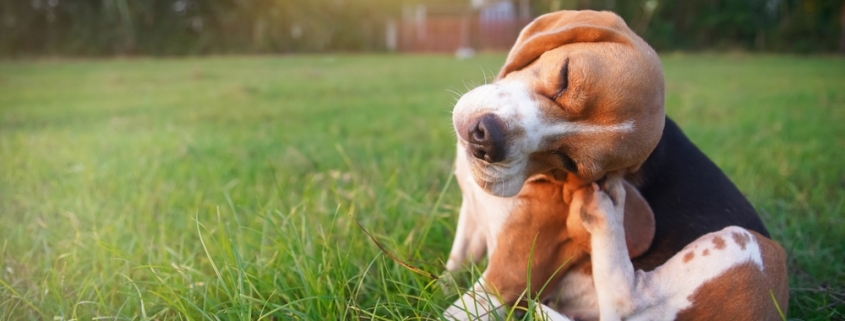Dog Fences are all the Same, Correct?
Why Not All Hidden Dog Fences are the Same

Westie with R12m
When it comes to hidden dog fences, it’s easy to assume they’re all the same – but that’s only partially true. While it’s accurate that most systems involve a receiver collar and an avoidance zone, saying they’re all alike is like saying all cars or computers are the same. The real question is, would you purchase a car or computer today that relies on 40-year-old technology and hasn’t been updated? Most of us recognize that safety, reliability, and durability have evolved significantly over the past four decades. The same goes for dog fences.
The safety of your beloved pets, choosing the right hidden fence system is a crucial decision. While there are many options available, not all are created equal. At DogFence Ltd we have been approached by many of the major manufacturers over the years to sell and install their systems but we chose to become DogWatch Dealers and have remained DogWatch Dealers for several major reasons: Safety, Technology, Reliability and Durability. Our Hidden Fences stand out as a premium product, offering superior quality, reliability, and peace of mind. Here’s why our customers choose to invest in a DogWatch system for their canine family members.
1. Heavy-Duty Boundary Wire: Built to Last
One of the key components of any hidden fence system is the boundary wire. With DogWatch fences, you will be supplied with a heavy-duty, high-quality wire that’s designed to withstand the elements and the test of time.
Why is this important? A sturdy boundary wire reduces the risk of breaks, which can disrupt the system and cause confusion for your pet. When the boundary wire fails, so does the consistency of the signal, leading to potential safety risks. Imagine your dog wandering beyond the boundary because the signal was compromised due to a break in a cheaper, thinner wire. With DogWatch, you minimize this risk, ensuring that the boundary remains secure and your pet stays safe.
2. Long Battery Life: More Uptime, Less Worry
Another critical factor to consider is the battery life of the receiver collar. Many cheaper alternatives on the market may only offer a few weeks of battery life before needing replacement. This frequent battery turnover not only becomes costly but also increases the risk of your pet wandering off if the battery dies unexpectedly.
DogWatch collars, on the other hand, boast an impressive battery life of up to two years. This extended battery life ensures that your pet is consistently protected without the constant worry of battery failure. After all, when the battery runs out, so can your dog.
3. No Dead Spots: The Power of Three Antennas
Consistency in signal reception is crucial for any hidden fence system. DogWatch receiver collars are the only ones on the market that feature three small antennas. This innovative design ensures that there are no dead spots in the receiver’s coverage, providing continuous and consistent signal reception. With no interruptions in signal, your dog learns and respects the boundaries more effectively, leading to better overall training and safety.
4. Lightweight and Durable: Perfect for All Pets
DogWatch collars are not only reliable but also designed with your pet’s comfort in mind. We offer lightweight and durable collars, making them suitable for dogs of all sizes, as well as cats. This versatility means you don’t have to compromise on quality or comfort, regardless of your pet’s size. Whether you have a playful Labrador or a curious cat, there is a DogWatch collar to fit comfortably while being tough enough to withstand the rough-and-tumble nature of pet play.
5. Lifetime Warranty: A Commitment to Quality
At DogWatch, we understand that dogs can be dogs – they love to run, jump, and play, sometimes a bit too boisterously! That’s why we offer a genuine lifetime warranty on our products. This warranty reflects our confidence in the durability and quality of our hidden fence systems.
Conclusion: DogWatch is the Smarter, Long-Term Investment
While DogWatch Hidden Fences may come with a higher price tag, the low running costs, durability and warranty make it the smarter and long-term cheaper option for safe pet containment. With high-quality, durable components, a superior design that ensures consistent performance, and the peace of mind that comes with a long-lasting battery and lifetime warranty, DogWatch is the ultimate choice for pet owners who prioritize safety and reliability. When it comes to your pet’s well-being, don’t settle for less. Choose DogWatch – because your pet deserves nothing but the best.



















